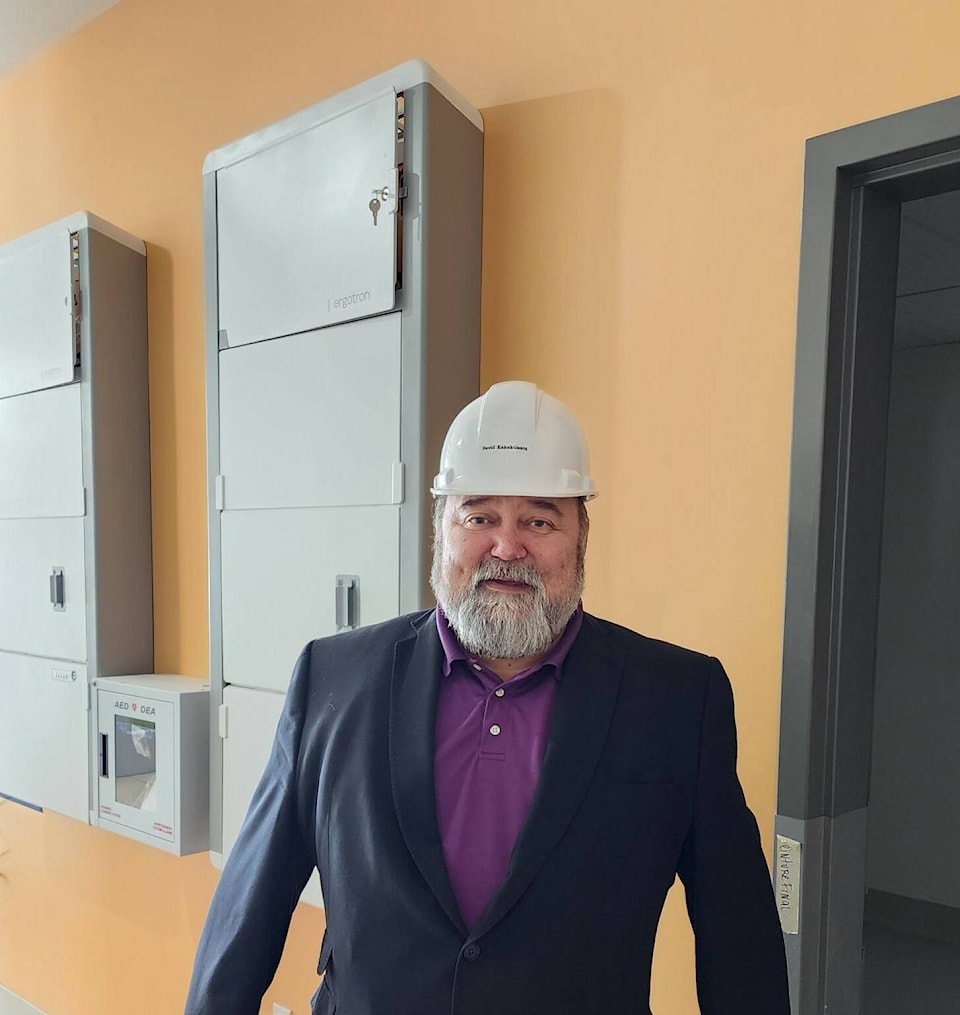The Government of Nunavut (GN) has signed a $150-million contract with Rankin Inlet-based Sakku Investments Corp. and its partner, Embassy West Senior Living, to operate the new Kivalliq Long Term Care Centre in Rankin Inlet.
The new 24-bed centre will provide Level 3, 4 and 5 long-term-care services for Elders and is expected to open in the summer of 2024. A ceremonial signing event is set to take place in Rankin Inlet at the end of this month.
In addition to operating the Kivalliq Long Term Care Centre, Sakku is dedicated to community and professional development by creating new, specialized personal-support-worker positions in healthcare. The initiative is a collaborative effort with Nunavut Arctic College and will include the development of a training program.
Sakku Investments Corp. president David Kakuktinniq said the company was happy to join this partnership with both the Government of Nunavut (GN) and Embassy West Senior Living.
He said the timing of the partnership was very fortuitous and a strong, positive step forward in Sakku’s work within the health sector. He said it’s truly an area of significant concern to the people of Nunavut, overall, and certainly Kivalliqmiut.
“It’s an area where we’re actually very proud to be able to provide these supports to our Elders,” said Kakuktinniq. “The significance of, you know, the business side of this, the scope of the work that we’re engaged in, is that the Rankin Inlet Long Term Care Centre is probably going to create between 43 to 45 jobs.
“And these jobs are very much predominately full-time jobs. With the type of work that’s going to be required at this facility, they’re very significant in terms of training and certification requirements
“This also links the operational aspects of this facility to Nunavut Arctic College, which is reciprocally providing the training and the support to certify, right to the highest level, nursing, personal care support workers, the cooking program, cleaners, some of the maintenance technicians and so forth.
“They’re all specialized in their own right. We’re going to be able to provide a blueprint, a road map of career paths and jobs over a significant amount of time, because the contract here is 10 years with a five-year option.”
Kakuktinniq said Sakku’s relationship with the college is the significant piece in terms of workforce development, adding this project is so significant in the care and support for the Elders, but it’s also the development of a workforce that is representative of Inuit and Inuit values.
He said the partnership with the GN, through the Department of Health, provides the mechanisms for the college to produce and support those programs.
“It’s a significant amount of collaboration at the highest levels of government. We extend the scope of this whole workforce development program to just beyond the facility in the Kivalliq because there are other centres that are going to be built in the Kitikmeot and Qikiqtani regions.
“The whole initiative’s strategy is meant to capture that whole workforce development over time. It’s a very serious catalyst and enabler of that kind of development operation,” he said.
Priority hiring has been established in the process so that it’s Nunavut beneficiaries in the first tier, then Northerners and so forth, said Kakuktinniq.
He said there are three or four tiers in the workforce demographic that you target, but you prioritize Inuit who are in the field or are willing to take training to become certified in a certain aspect of the work.
“It’s always a moving target because from day one you’re picking up whose available and whatever that demographic is. From day one, we start planning the resource and build up as a continuum.
“As the years go by you fill-in as many positions as you possibly can with Inuit beneficiaries.”
“It’s certainly a high-visibility, high-profile area of the work in general. And, of course, the nature of the work is very, very sensitive. We’re aspiring to be absolutely the gold standard in caring for the best level of service that we can provide.
“Throughout our discussions of the contracts and structures set out, everybody is on the same page, so, I think, everybody is unified and supporting of each other so that this ultimately succeeds.”
